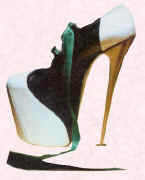 Once the Great War of 1914-18 began, fashion was influenced by the new wartime employment activities women had to engage in and the need for more practical utilitarian dress could not help but filter into what there was of mainstream fashion. Uniforms were everywhere as women did jobs once done by men and every job had a distinct uniform.
Once the Great War of 1914-18 began, fashion was influenced by the new wartime employment activities women had to engage in and the need for more practical utilitarian dress could not help but filter into what there was of mainstream fashion. Uniforms were everywhere as women did jobs once done by men and every job had a distinct uniform.
Right - 1918 Military Influenced Hat
Before the Great War being in service as servants was the usual employment for most women as housemaids, cooks or seamstresses. Choice had opened up in the last two decades and slowly some had become shop workers at the new emerging department stores and the more technically minded had become stenographers or telephonists. Women began to seriously participate in sports and needed clothes to move freely. Fashion adapted to their needs providing outfits for golf, climbing, skating, dancing, keep-fit, swimming and cycling. You can read about hat fashion of the 1900-1920 era here.
Then when the Second World War 1939-45 started, hats became less practical as people had to rush to air raid shelters and they would literally drop everything. Barriers of etiquette became broken down and although hats were not rationed in order to boost morale their wearing decreased.
Hats that were worn were generally practical and often homemade knitted warm hats, berets and hoods. Fast hats were formed as women tied headscarves into an instant hat such as a turban. Designers produced various new styles, but many only became universally popular after the war finished. You can read about hat fashion of the 1930s here.





















